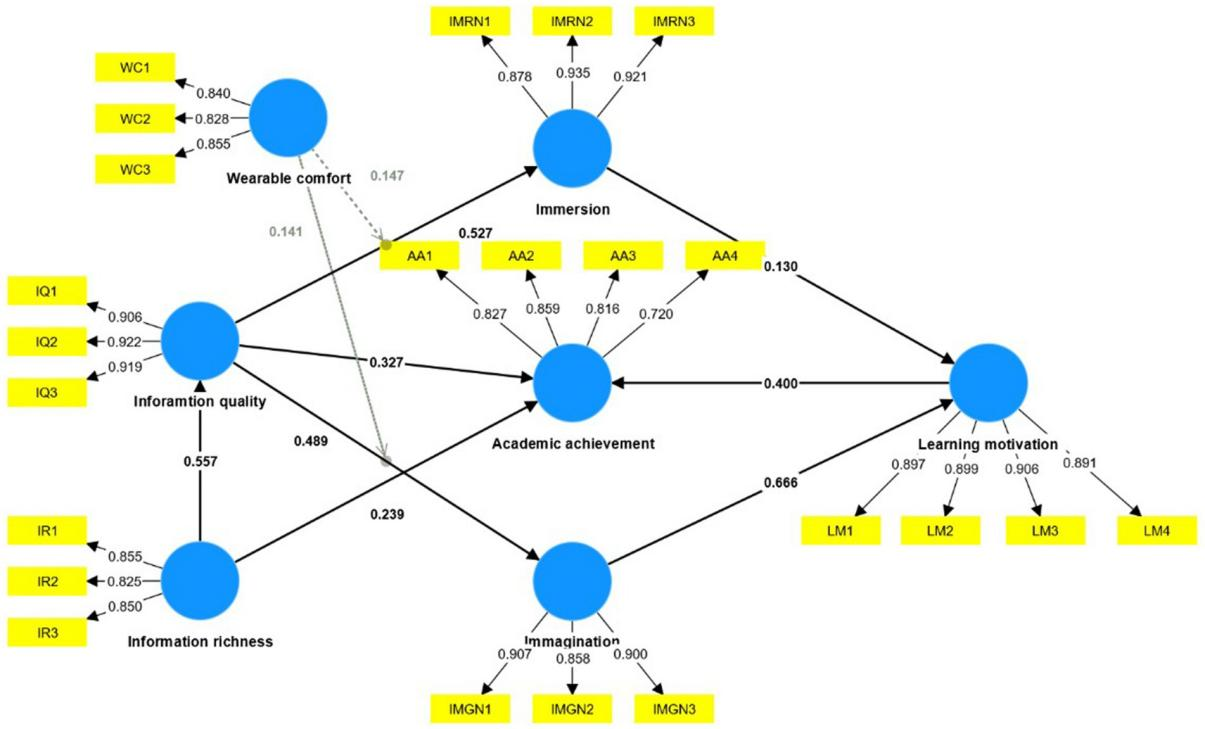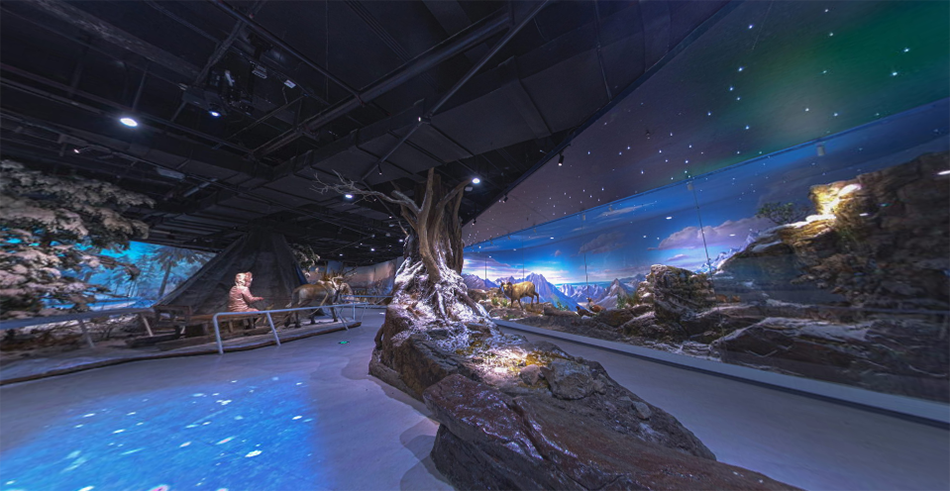Recently, Professor Li Wanjun and his team from Wuhan Textile University Birmingham College have made remarkable progress in applying digital technology (AR) to museum design education. The related research results were published in the journal “Frontiers in Psychology” (JCR subject classification Q2).
This paper was co-authored by Professor Wanjun Li from the Birmingham College as the first corresponding author, Wuhan Textile University as the first institution, and Dr. Anping Cheng as the first author. This study explores the application of AR in museum design education from a psychological perspective, especially its impact on aspects such as the purpose, motivation and outcomes of learning.
In this study, the team adopted a quantitative research method based on PLS-SEM to investigate the AR interactive experiences of 266 visitors to the Wuhan Natural History Museum. The research finds that information quality significantly positively affects immersion, imagination and academic achievements, while information richness has a positive impact on academic achievements.
Furthermore, information quality plays a mediating role between information richness and immersion/imagination, while immersion and imagination play a mediating role between information quality and learning motivation. Ultimately, learning motivation has a positive impact on academic achievements.

Figure 1. Results of the PLS structure model
Research background
Under the macro background of digital transformation driving the upgrading of the cultural and museum industry, museum education is undergoing a paradigm shift from traditional physical Spaces to a smart ecosystem that integrates the virtual and the real. This research is based on the new demands in the field of digital cultural education, focusing on the innovation of the museum design education platform architecture empowered by intelligent interaction technology, and striving to explore the construction path of human-machine collaboration mechanisms in digital learning scenarios. By integrating technical modules such as Extended reality (XR), Internet of Things perception, and big data analysis, the research team systematically analyzed the coupling relationship of multi-dimensional learning elements in a mixed reality environment, providing a theoretical framework for building a smart education platform with cognitive enhancement functions.
This research breaks through the limitations of the application of a single technical tool and is committed to establishing a digital education closed-loop system covering terminal interaction, content services and effect evaluation, which has important implications for the innovation of educational service models in cultural venues.


Figure 2. Example of museum exhibition based on AR
Research Introduction
Based on the methodology of digital transformation in education, this study constructed a three-dimensional evaluation model of the smart education platform for museums (technology perception layer - cognitive experience layer - learning effectiveness layer). Through the multi-dimensional behavioral data analysis of 266 users, the transmission mechanism of the technology empowerment effect in the digital learning field was deconstructed by using the Partial least squares structural equation Model (PLS-SEM). The study found that the multimodal perceptual interaction system of the platform can significantly improve knowledge construction efficiency by stimulating users' Embodied Cognition (β=0.387, p<0.001), among which the virtual-real integration degree achieved by spatial computing technology has a standardized path coefficient of 0.672 for academic achievement.
The research innovatively proposes a “double helix”optimization path for the digital education platform - establishing a user behavior data modeling and adaptive feedback mechanism at the technical architecture level, and forming an interdisciplinary integration solution of cognitive neuroscience and educational technology at the service design level. The achievement provides a full-stack solution for the construction of smart museums, including hardware interface standards, content development frameworks, and effect evaluation systems, and has paradigm reference value for the construction of digital cultural service platforms under the background of new educational infrastructure.
This research was jointly completed by Professor Wanjun Li from Birmingham Institute of Fashion and Creativity as the first corresponding author, Wuhan Textile University as the first institution, and Dr. Anping Cheng as the first author. The relevant research results are based on Exploring psychological dimensions of augmented reality in education: The title “a study on learning motivation and achievement in museums” was published in Frontiers in Psychology.


